Starting your woodworking journey can feel very overwhelming. There’s a tool for everything. The fact of the matter is, that a lot of cuts and projects can be accomplished with minimal tools. Hand saws, sandpaper, a power drill and a measuring tape may be all you need to embark on this journey. Sometimes certain tools are a necessity to finish your project and sometimes they are only beneficial to make the process faster and more accurate. Now, if you want to further invest in some time-saving tools, I’m here to share my toolkit of must-haves that will empower you to carve, cut, and create with confidence.
When I first entered the world of woodworking I was given a hand-me-down Radial Arm Saw by my Grandfather. It overwhelmed me, to say the least, but before I ever plugged it in, I researched the safety measures that I needed to take to build up the confidence to begin using it. Before I use any power tool for the first time, with few exceptions, I dive deep into the CORRECT and SAFE way to use it. Shortly after that, I rebuilt my front porch railing with my Radial Arm Saw. While I wouldn’t recommend this saw as a must-have for a beginner woodworker, due to its lack of safety measures, sometimes we take what we can get!
Orbital Sander
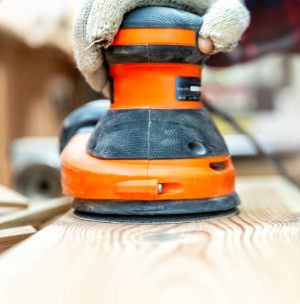
Oh, how I love the Orbital Sander. Let me tell you, embracing the Orbital Sander into my woodworking arsenal was like finding the last piece of a puzzle I didn’t even know was missing. Now, you CAN achieve results with a simple sheet of sandpaper wrapped around or glued to a small square block of wood, but for larger projects, an Orbital Sander will save your arms. I’ve purchased the Black & Decker Mouse Sander and a Belt Sander, but none are as versatile as the Orbital Sander. It became clear to me how important prepping your piece truly is. Proper sanding isn’t merely a step; it’s the foundation for everything that follows. Stain adheres better, paint glides on smoother, and finishes last longer. Every time I use the orbital sander, I’m not just finishing a project; I’m ensuring its beauty and durability for years to come.
Jig Saw
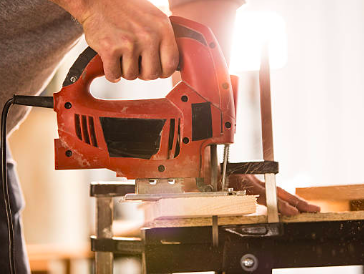
When I first got my hands on a Jig Saw, I felt like I had unlocked a new level of woodworking. The freedom to cut intricate designs and curves was exhilarating.
With ease, you can create a shape out of a simple sheet of MDF or plywood. If you don’t have a large shop or you’re like me and do most of your work outside, the Jig Saw is relatively portable, some are battery-operated making its portability even better. One thing I will say is that a Jig Saw is only as good as the quality of your blade. The Jig Saw offers different blades for different cutting purposes. Always be sure to make sure your Jig Saw blade is compatible with your saw as they come in a few different shanks. There are up-cutting blades for cutting straight lines in wood, down-cutting blades for cutting into things like laminate, blades designed for cutting metal and even blades for cutting tile. Sometimes a Jig Saw Blade Kit is nice because you’ll get an array of blades with different teeth to achieve smooth cuts, make rough cuts, fast cuts, and even scroll cuts. It’s recommended, when cutting wood, to get a blade that has between 6-10 tpi, meaning teeth per inch, a lower tpi means a rougher cut.
Table Saw
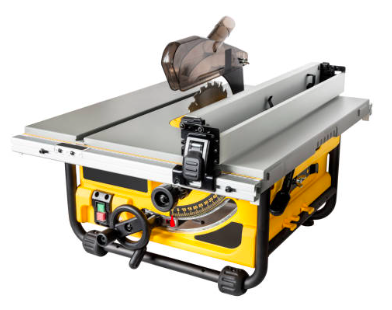
Investing in a quality Table Saw was one of the best decisions I made. While it is another intense tool, I spent time learning, practicing, and ensuring that I always followed safety protocols, as you should too. The Table Saw is an essential tool for woodworking. It’s powerful and precise, providing the strength and precision needed to tackle any project. With a quality Table Saw you can make clean cuts, rip through lumber easily, and experiment with joinery techniques. However, it’s important to remember that the Table Saw is a powerful tool that requires respect and caution. Take the time to learn about its capabilities and safety protocols before using it. With proper training, the Table Saw can help you turn your ideas into reality, making it a valuable partner in your woodworking journey. The Table Saw can save you money at the end of the day. Without a tool like this, you’ll most likely spend more money buying wood with your desired measurements rather than being able to buy a larger piece and ripping it down to size.
Circular Saw
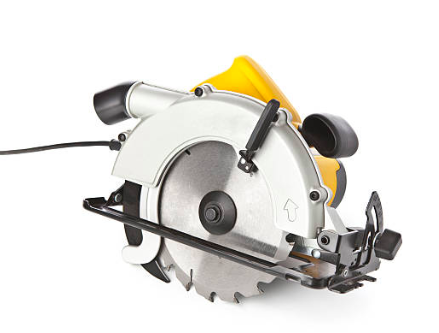
When I first added the Circular Saw to my toolkit, it was like I had discovered a secret weapon. Its powerful performance and portability revolutionized how I approached my projects, both in the workshop and for my backyard creations. With the Circular Saw in my grip, I could cut through large sheets of plywood with ease, trim massive beams with precision, and take on projects that previously seemed out of my scope. Its agility and efficiency are truly remarkable.
Pocket Hole Jig
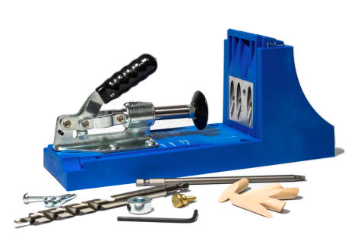
If you’re starting your woodworking journey, I highly recommend getting a Pocket Hole Jig. It’s an indispensable tool that will help you achieve excellence in your craftsmanship. Joinery used to intimidate me because of its complexity, but this tool changed everything. I still remember my first joinery project without it, and let’s just say the results were far from satisfactory. The angles were off, the joints were weak, and I felt very frustrated. The Pocket Hole Jig is not just a convenience, it’s a gateway to taking your projects from DIY to the professional level. It allows for quick and sturdy assembly, making it perfect for everything from constructing robust furniture to creating delicate decor pieces.
Carpenter Square
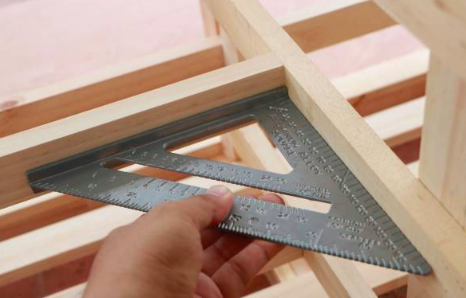
Using a Carpenter Square has completely changed the way I approach my woodworking projects. It serves as a constant reminder that in woodworking, as well as in life, paying attention to detail is crucial. Although it may not make any noise or move mountains, the Carpenter Square plays a crucial role in ensuring precision and accuracy in my work. It acts as the foundation upon which the rest of my woodworking is built. It’s a testament to the fact that sometimes, the most powerful tools are those that guide our hand’s accurately.
Clamps
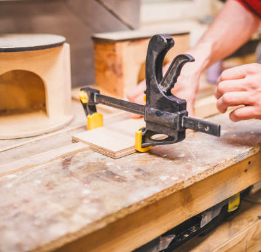
I cannot stress enough how important Clamps are in any workshop. They may not be as flashy as power tools or specialized jigs, but they are indispensable tools that can make a huge difference in any woodworking project. Clamps are like extra sets of hands, which can come in handy when holding multiple pieces of wood together for a perfect fit. They are particularly useful during glue-ups, where you need to hold the pieces in place for an extended period while the glue dries. Without Clamps, the pieces of wood can easily shift, resulting in misaligned joints and a shoddy final product. Moreover, Clamps can provide the necessary pressure to create a tight joint, which is essential in woodworking. A poorly fitting joint can cause the wood to warp or twist over time, leading to structural instability and a less-than-perfect finish.
